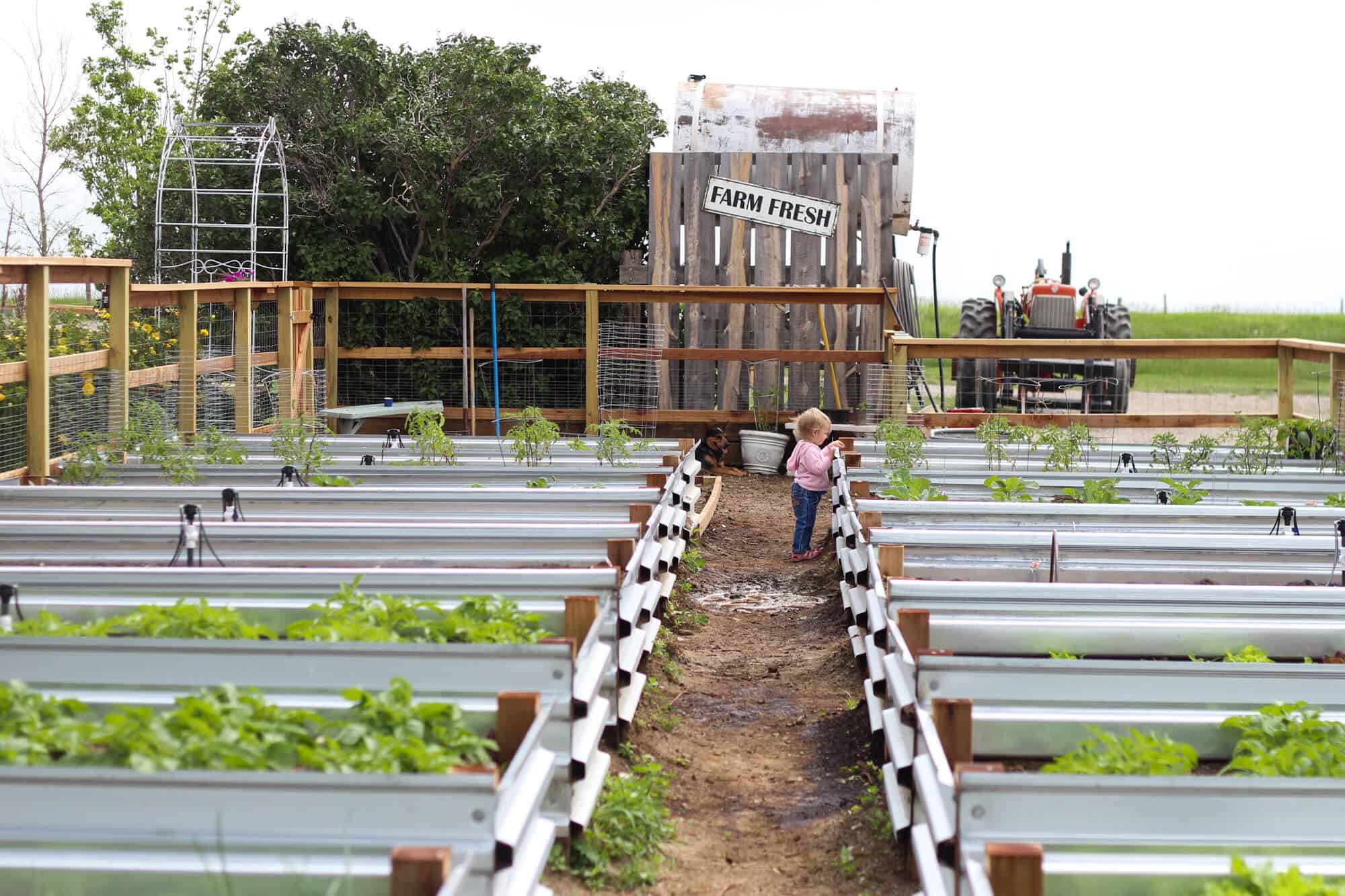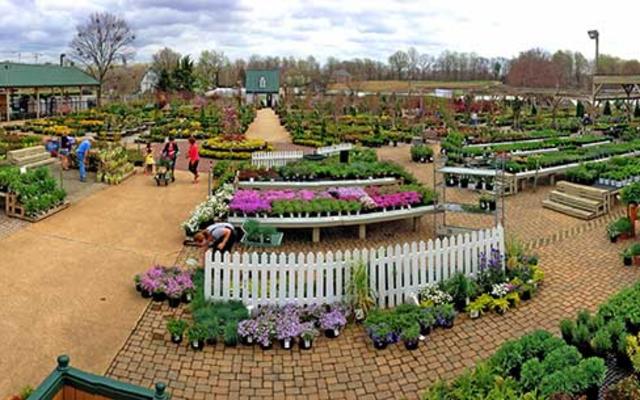Explore the Best Practices for Homestead Gardening at Any Skill Level
Explore the Best Practices for Homestead Gardening at Any Skill Level
Blog Article
Reveal the Tricks to Creating a Gorgeous and Efficient Horticulture Room
Developing a attractive and productive horticulture space is not just a matter of growing vegetables and blossoms; it requires a critical technique that includes different critical elements. From selecting the right place based on sunlight and dirt kind to attentively making your design and picking ideal plants, each decision plays a crucial role in the success of your yard.
Selecting the Right Place
Selecting the excellent location for your yard is essential to its success and general aesthetic allure. The primary step in this procedure involves assessing sunlight direct exposure, as a lot of plants need at least six hours of direct sunshine daily (Homestead Gardening). A south-facing garden commonly receives the most light, while shaded locations can hamper growth and blooming
In addition, think about dirt quality and drain. Well-draining dirt is necessary to avoid water logged roots, which can lead to plant illness. Conducting a soil test can give beneficial information relating to pH degrees and vitamins and mineral web content, allowing you to modify the dirt appropriately.
Moreover, closeness to water sources is one more aspect to evaluate - Homestead Gardening. Having easy accessibility to a hose pipe or irrigation system can streamline the watering procedure and encourage consistent plant care. Wind defense is likewise important; placing your garden near frameworks, such as fencings or wall surfaces, can protect it from harsh winds that may damage fragile plants
Finally, take into consideration availability for maintenance and harvesting. A well-placed garden enables convenient access, making sure that you can easily often tend to your plants without causing excessive stress or disruption. Thoughtful place option lays the structure for a thriving yard.
Selecting Plants Carefully
When selecting plants for your garden, it's important to take into consideration aspects such as environment, soil problems, and individual preferences to make certain a harmonious and effective area. A detailed understanding of your neighborhood environment will assist you in choosing plants that grow in your specific environment. For example, choosing drought-resistant ranges is valuable in arid areas, while moisture-loving types may be much more ideal for locations with high rainfall.
Dirt conditions are equally essential; performing a soil examination can expose pH levels and nutrient content, enabling you to pick plants that will certainly thrive. Native plants are commonly a superb option, as they are normally well-adapted to local soil types and need less maintenance.
Furthermore, consider your gardening objectives. Are you intending for an ornamental screen, a vegetable garden, or maybe a combination of both? This will influence your selections dramatically. Last but not least, review your personal preferences-- choosing plants that resonate with your aesthetic preferences will boost your enjoyment and commitment to keeping your yard. By very carefully evaluating these factors, you can produce a diverse and successful plant option that elevates your gardening experience.
Creating Your Garden Layout
With a thoughtfully picked plant selection in hand, the next step is to develop a garden design that maximizes both beauty and functionality. Begin by evaluating the available room, taking into consideration aspects such as color, sunlight, and wind patterns. A well-planned layout must incorporate numerous zones, including areas for growing, paths, and potentially seating.
Begin with larger plants or prime focus, such as trees or tall perennials, placed strategically to produce aesthetic passion. Layer smaller sized plants ahead to boost depth and structure. Take into consideration the development habits of your selected plants; taller ranges ought to be placed at the back or center of beds, while shorter ones can line the sides.
Including paths not just facilitates gain access to for upkeep however additionally welcomes exploration. Use materials that match the garden's total aesthetic, whether rock, wood, or gravel chips.
Additionally, consider seasonal modifications and exactly how your format will look throughout the year. Incorporating evergreens alongside seasonal flowers can make certain year-round beauty. Eventually, a properly designed garden design harmonizes the all-natural charm of plants with functional factors to consider, causing a room that is both inviting and effective.
Enhancing Dirt Health And Wellness

To improve soil wellness, start by carrying out a dirt examination to analyze pH levels, nutrition material, and dirt texture. Include natural issue such as garden compost, well-rotted manure, or leaf mold and mildew to enhance dirt structure, water retention, and microbial task.
Mulching is one more effective published here approach; it not only preserves moisture yet likewise reduces weeds and progressively enhances the dirt as it breaks down. Avoiding extreme tillage is important, as it can interrupt soil structure and damage advantageous organisms. Rather, adopt no-till or very little husbandry practices to preserve dirt honesty.

Maintaining Your Yard Effectively
A well-kept yard gives satisfaction and performance, calling for constant attention to make sure that plants flourish and the landscape remains welcoming. Effective yard maintenance involves numerous vital methods that improve the wellness of your plants and the total visual of your area.
Normal watering is critical; nonetheless, it is necessary to tailor your watering routine based upon the certain requirements of your plants and neighborhood environment problems. Mulching can aid retain dampness, suppress weeds, and regulate dirt temperature. In addition, prompt weeding prevents competitors for sources and nutrients, guaranteeing that your plants thrive.
Pruning is another necessary task. It motivates healthy and balanced development, gets rid of diseased or dead branches, and shapes plants to maintain an attractive framework. In addition, keeping track of for conditions and parasites is vital; early detection and intervention can conserve your plants from considerable damage.
Fertilization ought to be performed thoughtfully, utilizing natural options whenever feasible to promote lasting dirt wellness. Seasonal tasks such as growing, splitting perennials, and preparing for winter season will guarantee your garden stays vibrant year-round. By adhering to these practices vigilantly, you can grow a yard that is both productive and stunning.
Final Thought
Finally, the production of a attractive and effective gardening room needs mindful factor to consider of numerous crucial elements. Selecting an ideal place with adequate sunshine, choosing ideal plants, making an aesthetically pleasing layout, enhancing soil health and wellness, and making sure normal maintenance are essential components. By incorporating these techniques, one can cultivate a flourishing yard that not just improves the landscape however additionally promotes ecological equilibrium and sustainability. Such an approach eventually causes a rewarding horticulture experience.
From choosing the right area based on sunshine and dirt kind to thoughtfully creating your format and choosing suitable plants, each decision plays an essential function in the success of your garden. Well-draining dirt is vital resource to protect against water logged roots, which can lead to plant illness.When picking plants for your yard, it's crucial Read Full Article to take into consideration variables such as environment, dirt conditions, and individual choices to make certain a productive and harmonious area. Eventually, a well-designed garden layout integrates the natural charm of plants with sensible considerations, resulting in a space that is both welcoming and efficient.

Report this page